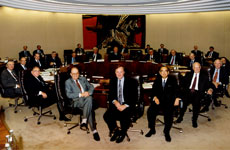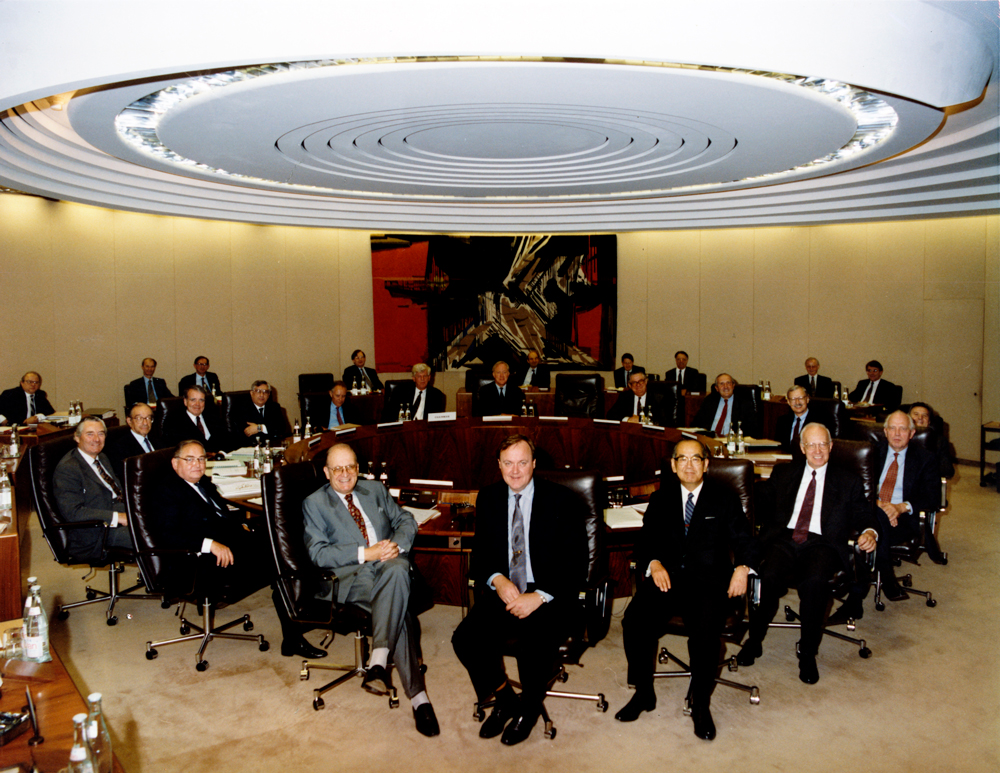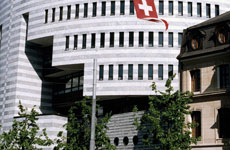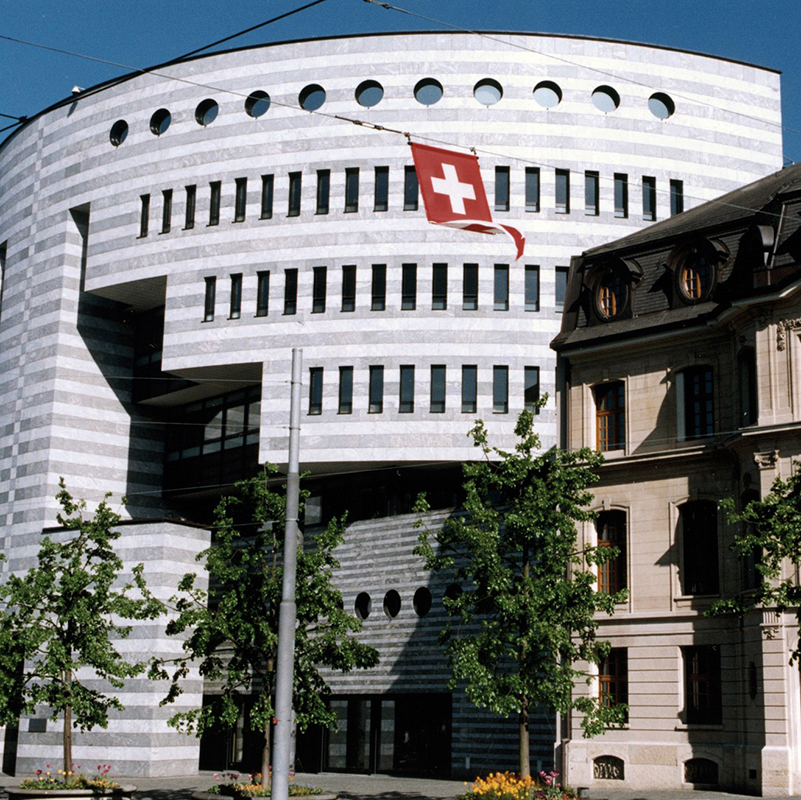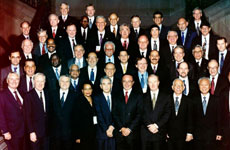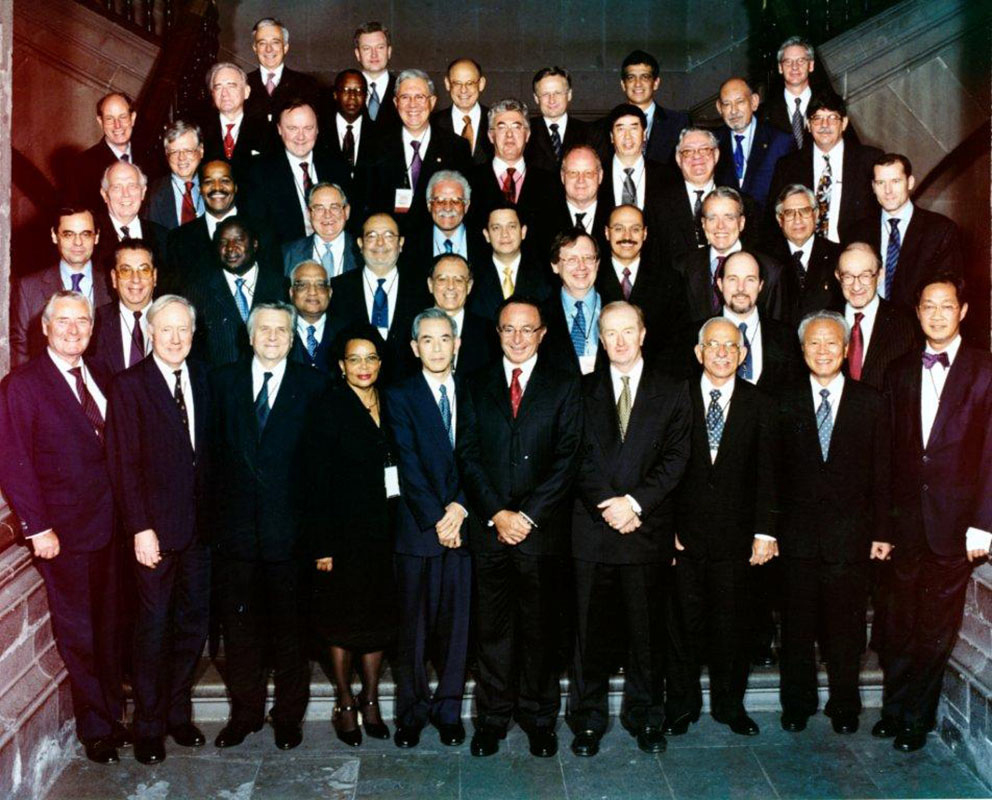History - the BIS going global (1961- )
In support of the Bretton Woods system
The success of the European Payments Union in restoring currency convertibility in Europe in 1958 meant that the Bretton Woods system of freely convertible currencies at fixed exchange rates (based on the US dollar and gold) was finally operational throughout the western world. This system was supposed to be largely self-adjusting, with the IMF playing a global supporting and coordinating role. Nevertheless, a good deal of international cooperation was required to keep the Bretton Woods system running smoothly.
The BIS played an important part in coordinating the response of the central banks to this challenge, mostly within the framework of the Group of Ten (G10, consisting of Belgium, Canada, France, Germany, Italy, Japan, the Netherlands, Sweden, the United Kingdom and the United States, plus Switzerland as an associated member). From 1961, initiatives taken by the G10 central banks included the creation of a common Gold Pool to intervene in the private gold market (1961-68), the creation of a central banks' currency swaps network, and repeated joint currency support arrangements (for example, to shore up the pound sterling and the French franc). These measures helped to prolong the lifespan of the Bretton Woods system during a period of unprecedented economic growth (the "golden sixties"), but could not prevent its eventual demise. By the early 1970s, the value of the US dollar was in effect determined by the markets, marking the end of the fixed exchange rate regime and inaugurating the era of floating currencies.
In search of financial stability
The 1970s were characterised not only by floating exchange rates and high inflation, but also by the rapid growth of international financial markets and of cross-border money flows. As a result, financial stability issues came once again to the fore.
In 1974, the collapse of Bankhaus Herstatt in Germany and of Franklin National Bank in the United States highlighted the lack of efficient banking supervision of banks' international activities, and prompted the G10 central bank Governors to create the Basel Committee on Banking Supervision. The Latin American debt crisis of 1982 highlighted the danger of undercapitalised banks being over-exposed to sovereign risk.
In 1988, the Basel Committee issued the Basel Capital Accord, introducing a credit risk measurement framework for internationally active banks that became a globally accepted standard. This Capital Accord has since been further refined in the Basel II (2004) and Basel III (2017) frameworks. Such standards aim to achieve a better and more transparent measurement of the various risks incurred by internationally active banks, limiting the possibility of contagion in case of a crisis and strengthening the global financial system overall.
Besides the Basel Committee, other BIS-based committees that have helped to promote monetary and financial stability are: the Markets Committee (since 1964), the Committee on the Global Financial System (CGFS, since 1971) and the Committee on Payment and Market Infrastructures (CPMI, since 1990).
With its economic, monetary and financial research, the BIS has continued to support the work of the Basel-based committees and of the central bank community more generally. The BIS has also developed into a hub for sharing statistical information among central banks, and for publishing statistics on global banking, securities, foreign exchange and derivatives markets. In 1999, the Financial Stability Institute (FSI) was created to promote dissemination of the work undertaken by the supervisory community, and to provide practical training to financial sector supervisors worldwide.
Given the BIS's increasingly global role since the 1960s, which was also reflected in the expansion of its banking business undertaken on behalf of a growing number of central banks, it had become clear by the early 1990s that the Bank's outreach and governance model had to evolve accordingly. From 1994 onward, membership of the BIS and of its Board of Directors was expanded in stages with the aim to include all systemically important emerging market economies. Private shareholding, a remnant from the BIS's foundation, was discontinued in 2001, with BIS shares being exclusively reserved for central banks (at 30 June 2018, 60 central banks worldwide were shareholding members of the BIS).
As an expression of its commitment to fostering global monetary and financial stability, the BIS has opened Representative Offices for Asia and the Pacific in Hong Kong SAR (1998) and for the Americas in Mexico City (2002).

